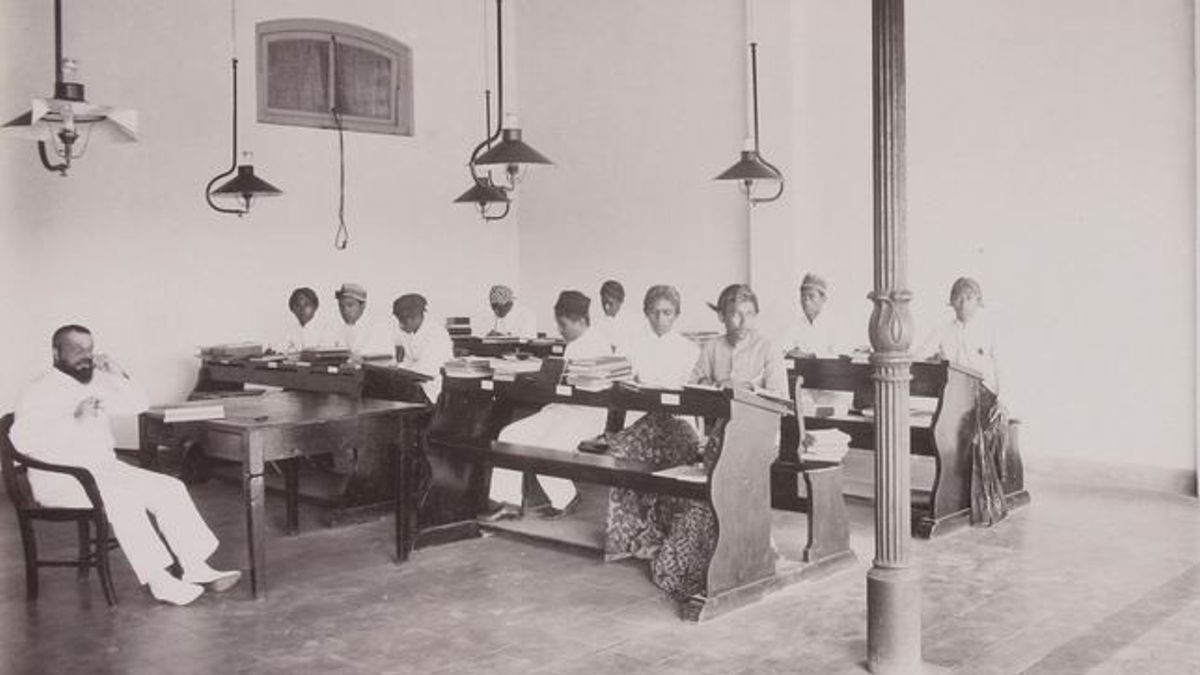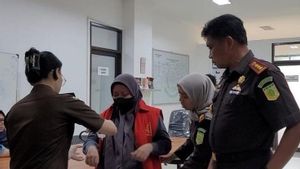JAKARTA - The Java Medical School is a pioneer of higher education in Indonesia. From there, the history of the teaching profession is known in Indonesia. The campus which later changed its name to School tot Opleiding van Indische Artsen (STOVIA) in 1899 also spearheaded the national movement.
Thanks to STOVIA, the term lecturer is popular in universities all over the country. Lecturers become intermediaries in the progress of the nation. Soekarno also recognized the importance of lecturers as forming the mentality of an independent nation.
The lack of European doctors who were willing to directly deal with disease outbreaks in remote parts of the country was one of the reasons for the establishment of the Javanese Medical School in 1851. This school was initiated directly by the Dutch colonial government for the natives.
The Javanese Medical School was first established in Weltevreden, Batavia. At that time, student admissions were still limited to those from Java. Those who become teaching staff are called lecturers. That's where the term famous lecturer was first introduced.
The mention of lecturers is not without reason. The word lecturer comes from the Dutch word 'docent' which means teacher. Then, the Dutch word was absorbed into Indonesian to become "lecturer". The word means teaching staff at universities.
The term has been known for a long time since the Dutch doctor, HF Roll, transformed the Javanese Doctor's School into STOVIA in 1899. At the same time, STOVIA began to accept students from outside Java. Among others, students from Minangkabau, Celebes (Sulawesi), and Sumatra.

“Towards the end of the 19th century, the Javanese Medical School was transformed into STOVIA. Who saw the pictures of the students of the Javanese Medical School and STOVIA in their early years would be attracted by the students' clothing. They are dressed in traditional Javanese clothes, cloth, blangkon, and bare feet,” said Rosihan Anwar in the book History of Small “Petite Histoire” Indonesia Volume 3 (2009).
The use of traditional clothing for teaching participants was recognized by the colonial government as part of a strategy to get closer to the people. Especially, so that in the future STOVIA graduates will always feel close or gain the trust of the people of the Indies.
However, the same thing does not apply to lecturers at STOVIA. A row of permanent lecturers dressed in typical European fashion with trousers, coats, ties, and two pens tucked in their coat pockets.
Even so, the relationship between lecturers and students is maintained. One time they were opposite. Other times they respect each other. Take, for example, the student of STOVIA Soetomo and his friends who founded the Boedi Oetomo organization.
At that time, some of STOVIA's lecturers were worried about him. This was because the movement that Soetomo and his friends had created had the potential to fight the colonial government. Moreover, Soetomo is still under their supervision and upbringing.

"Their failure to 'build' Soetomo and his friends on the path that the government wants may make them appear wrong in the government's view. Conditions that make their position difficult," wrote Gamal Komandoko in Boedi Oetomo: The Beginning of the Rise of National Awareness (2008) .
As a result, the lecturers at STOVIA had the intention of expelling Soetomo from the campus. Luckily, Soetomo was defended by other STOVIA students and lecturers. Director of STOVIA HF Roll became the most instrumental.
HF Roll, who was known for his broad views and had a great contribution to the progress of the nation through STOVIA, immediately rejected the idea. As a form of sympathy for Soetomo, HF Roll said that those who had the idea of removing Soetomo were never idealistic when they were young.
"Isn't any of you present here as radical as Soetomo when you were 18 years old?" shouted the man who is familiarly called the STOVIA student Father Roll.
Soekarno's special relationship with his lecturers
The special story of the relationship between lecturers and students is not only present at STOVIA. The young Soekarno who received higher education at the Technische Hoogeschool Bandung (THB) also experienced it.
He admitted that he was amazed by his lecturer who is often called the professor, Prof. Ir. Charles Prosper (CP) Wolff Schoemaker. Schoemaker's views shaped Soekarno's personality, especially in matters of humanity and anti-colonialism. The same goes for Architecture, art, and beautiful women.
“On campus, he was known to be close to a small group of indigenous students who started nationalist activities. Among them Sukarno, one of his most brilliant students. In addition to his activities as an architect and academic, Schoemaker is active in various arts organizations."
"Among them are Bandung Art Circle. Schoemaker is also known as a sculptor and painter. One of his famous sculptures is the De Groot Monument, which was built in Citarum Park, Bandung. Currently the monument has been replaced with a mosque and the Istiqomah School," concluded Amandra M. Megarani et al in their article in Tempo Magazine entitled Three Religions of Schoemaker (2016).
As a lecturer who has an open perspective, Schoemaker is like a friend to Bung Karno. Soekarno often went to Schoemaker's house to study and discuss. So close, at one time Soekarno needed money for the struggle, Schoemaker was willing to share his work with Soekarno.
Meanwhile, Soekarno openly told Schoemaker his dream if he wanted to build a big house, namely Indonesia. The good relationship continues. Among other things, the two of them often sent letters of support when Sukarno was imprisoned and exiled.
However, there are times when the two are at odds with each other. However, that doesn't hide the fact that the two admire each other. In fact, Soekarno had returned the favor to Schoemaker by becoming a savior when the eccentric lecturer was detained by the Japanese.
After Indonesia's independence and Sukarno had realized his dream of building Indonesia, that was the case. The two of them frequently wrote letters. Among other things, he told many things from work, architecture, Islam and personal problems. Even though Shoemaker died on May 22, 1949, the second friendship remained forever.
Soekarno then designed a tombstone as a final tribute to the teacher. The gravestone now stands tall in Ereveld Pandu, Bandung. All of this proves that education and devotion to a master can pave the way for many things.
“One of the professors, Professor Ir. Wolff Schoemaker, is a great man. It knows no skin color. For him there is no Netherlands or Indonesia. For him there is no bondage or freedom. He just bows his head to someone's abilities," Soekarno was quoted as saying by Cindy Adams in Bung Karno's book: The Indonesian People's Tongue Connector (1965).
*Read other information about HISTORY or read other interesting articles from Detha Arya Tifada.
Other MEMORIESThe English, Chinese, Japanese, Arabic, and French versions are automatically generated by the AI. So there may still be inaccuracies in translating, please always see Indonesian as our main language. (system supported by DigitalSiber.id)









